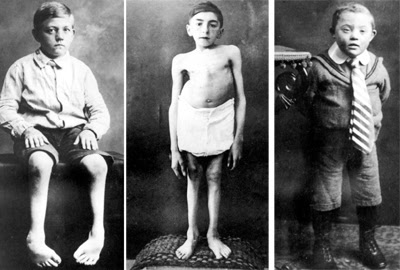
Photo description: Nurses from th early 1940’s Germany standing in front of large wooden doors set into and old brick building.
Joe and I went to see The Evidence Room at the Royal Ontario Museum. The exhibit presented the architectural evidence that Auschwitz was purpose built for death. We had been meaning to go for a long time but, for each of us and for different reasons, we found ourselves a bit frightened of the intensity of the experience. But, it closes next weekend and we dug down and made the decision. We would not miss this. We would not allow ourselves the convenient “we were too busy” excuse that people use to avoid what needed to be done. So. We went.
The exhibit was not large, but it didn’t need to be. The museum was packed yet we were the only ones there. And while we were there, no one else came in. Before entering a note asked visitors to be respectful of the space, it was impossible for us not to be. I wanted to write about a particular moment for me when I was going through the exhibit, I choose to keep my internal emotional reaction private, mostly because I don’t really have the words. But there was a moment.
As I looked at the architectural plans they noted that there were stairs down to the corridor that lead to the chambers. Stairs. Now I know that lots and lots of disabled people ended up at the camp. One picture tells that story:
 |
| Photo description: colour photograph of adaptive mobility devises taken from prisoners with disability on arrival at Auschwitz. |
But the word ‘stares’ took me to what I knew of disability history. I went to look for information on Hadamar and the Hadamar Euthanasia Centre. Here was the headquarters of the T-4 program that ordered state elimination of people with disabilities. Now go back up and look at the picture at the top of this blog. You will see the ‘nurses’ who staffed that center. These were the people who were tasked with the death of individual people with disabilities, tasked also with the elimination of the people who were disabled. They smiled for the pictures with swastikas tattooed on their hearts.
They don’t look like monsters.
They never do.
Now let’s take a look at some of those that they killed. Some of our own. Our people. Claimed people. They are embraced as part of our history and need to be remembered in order for their story to be repeated not repelled.
 |
| Photo description: Picture of three young boys with disabilities who were killed, very possibily by the nicely dressed, smiling for a photograph nurses in the first picture. |
Rolling out of the exhibit, rolling away from what is now past not present, what is remembered not lived, I realized how dangerous hatred is when it finds a spokesperson, when it finds a permission giver, when it finds a champion. I realized that I roll myself in freedom, not captivity, into life, not death.
But I don’t roll into a future where I am convinced that ‘Never Again’ means us.
